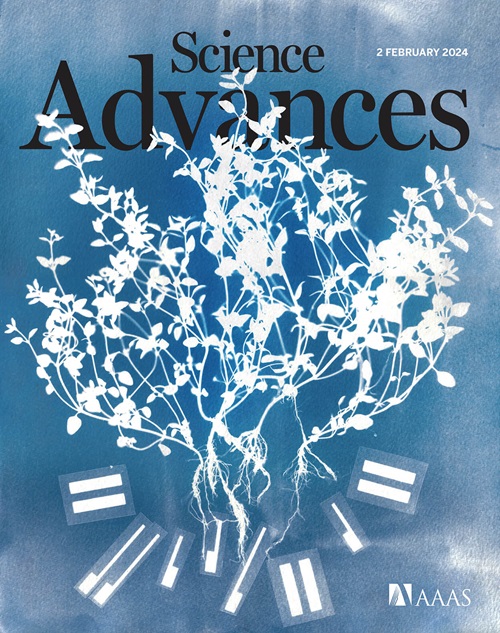Mechanism of D-type cyclin recognition by the AMBRA1 E3 ligase receptor
IF 11.7
1区 综合性期刊
Q1 MULTIDISCIPLINARY SCIENCES
引用次数: 0
Abstract
AMBRA1 is a tumor suppressor protein that functions as a substrate receptor in the ubiquitin conjugation system and regulates the stability of D-type cyclins and cell proliferation. Here, we present the cryo-EM structure of cyclin D1–bound AMBRA1-DDB1 complex at 3.55-Å resolution. The structure reveals a substrate interaction surface on the AMBRA1 WD40 domain that specifically binds to the C-terminal region of D-type cyclins. This interaction is dependent on the phosphorylation of Thr286 residue in the C-terminal phosphodegron site of D-type cyclins. The phosphodegron motif folds into a turn-like conformation, followed by a 310 helix that promotes its assembly with AMBRA1. In addition, we show that AMBRA1 mutants, which are defective in cyclin D1 binding, lead to cyclin D1 accumulation and DNA damage. Understanding the AMBRA1–D-type cyclin structure enhances the knowledge of the molecular mechanisms that govern the cell cycle control and may lead to potential therapeutic approaches for cancers linked to abnormal cyclin D activity.
AMBRA1 E3连接酶受体识别d型细胞周期蛋白的机制
AMBRA1是一种肿瘤抑制蛋白,在泛素偶联系统中作为底物受体,调节d型细胞周期蛋白的稳定性和细胞增殖。在这里,我们以3.55-Å分辨率展示了cyclin d1结合的AMBRA1-DDB1复合物的低温电镜结构。该结构揭示了AMBRA1 WD40结构域上的底物相互作用表面,特异性结合d型细胞周期蛋白的c端区域。这种相互作用依赖于d型细胞周期蛋白c端磷酸化位点上Thr 286残基的磷酸化。磷光子基序折叠成一个转弯状构象,随后是一个310螺旋,促进其与AMBRA1的组装。此外,我们发现AMBRA1突变体在细胞周期蛋白D1结合上存在缺陷,导致细胞周期蛋白D1积累和DNA损伤。了解ambra1 - D型细胞周期蛋白结构可以增强对控制细胞周期的分子机制的认识,并可能导致与异常细胞周期蛋白D活性相关的癌症的潜在治疗方法。
本文章由计算机程序翻译,如有差异,请以英文原文为准。
求助全文
约1分钟内获得全文
求助全文
来源期刊

Science Advances
综合性期刊-综合性期刊
CiteScore
21.40
自引率
1.50%
发文量
1937
审稿时长
29 weeks
期刊介绍:
Science Advances, an open-access journal by AAAS, publishes impactful research in diverse scientific areas. It aims for fair, fast, and expert peer review, providing freely accessible research to readers. Led by distinguished scientists, the journal supports AAAS's mission by extending Science magazine's capacity to identify and promote significant advances. Evolving digital publishing technologies play a crucial role in advancing AAAS's global mission for science communication and benefitting humankind.
 求助内容:
求助内容: 应助结果提醒方式:
应助结果提醒方式:


